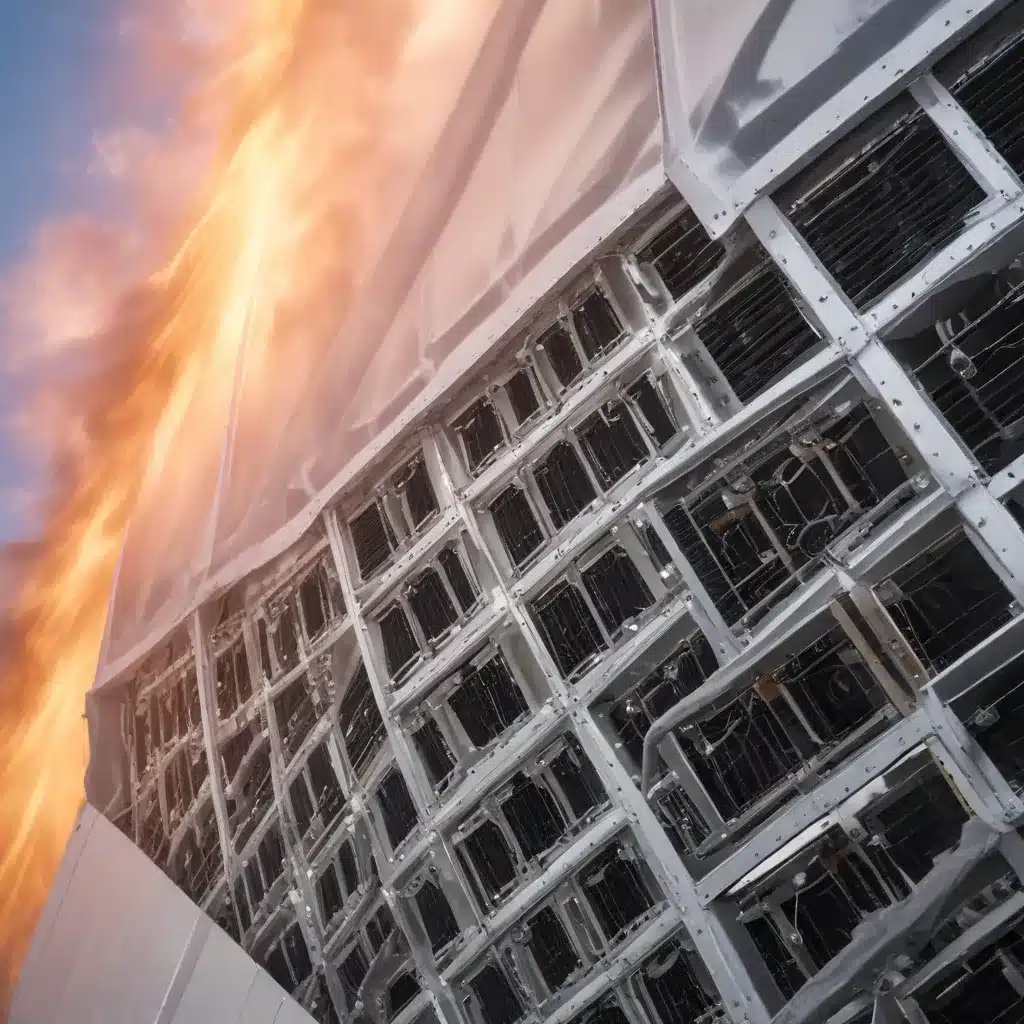
As renewable energy technologies continue to evolve and gain prominence, the need for efficient and reliable thermal management systems has become increasingly critical. At the forefront of this challenge are air-cooled heat exchangers, versatile and adaptable solutions that play a crucial role in optimizing the performance and longevity of renewable energy systems.
Understanding the Importance of Thermal Management in Renewable Energy
Renewable energy sources, such as solar, wind, and geothermal, generate significant amounts of heat during their operation. This heat must be effectively dissipated to maintain optimal system efficiency, prevent equipment damage, and ensure reliable long-term performance. Inadequate thermal management can lead to premature component failure, reduced energy output, and increased maintenance costs – all of which can undermine the sustainability and economic viability of renewable energy projects.
Air-cooled heat exchangers have emerged as a preferred choice for thermal management in renewable energy applications due to their versatility, cost-effectiveness, and ease of integration. By leveraging the principles of convection and conduction, these heat exchangers efficiently transfer heat from the source to the surrounding air, ensuring that critical components within the renewable energy system remain within their safe operating temperatures.
Optimizing Air-Cooled Heat Exchanger Design for Renewable Energy Applications
The design of air-cooled heat exchangers for renewable energy systems must take into account a variety of factors to ensure optimal performance and efficiency. These include:
Airflow Management
Proper airflow management is crucial for maximizing the heat transfer capabilities of air-cooled heat exchangers. Factors such as fan selection, duct design, and air velocity optimization can significantly impact the overall cooling effectiveness. Advanced computational fluid dynamics (CFD) modeling can help engineers optimize airflow patterns and minimize pressure drops, ensuring efficient heat dissipation.
Material Selection
The choice of materials for air-cooled heat exchangers can have a significant impact on their thermal performance, durability, and cost. Commonly used materials include aluminum, copper, and stainless steel, each with its own advantages and tradeoffs. Careful material selection based on factors such as thermal conductivity, corrosion resistance, and weight can help engineers design more reliable and cost-effective thermal management solutions.
Fin Design and Configuration
The fin design and configuration of air-cooled heat exchangers play a crucial role in enhancing heat transfer. Factors such as fin density, geometry, and surface area can be optimized to improve heat dissipation rates. Innovative fin designs, such as louvered or wavy fins, can further enhance the heat transfer coefficient and reduce pressure drop, leading to more efficient cooling.
Integration with Renewable Energy Systems
Integrating air-cooled heat exchangers into renewable energy systems requires a deep understanding of the system’s specific thermal management requirements. Engineers must consider factors such as heat loads, operating temperatures, space constraints, and environmental conditions to ensure seamless integration and optimal performance.
Maintenance and Performance Optimization
Maintaining the peak performance of air-cooled heat exchangers in renewable energy systems is crucial for ensuring long-term reliability and energy efficiency. Some key maintenance and optimization strategies include:
Regular Cleaning and Inspection
Accumulation of dust, debris, and biological growth on the heat exchanger surfaces can significantly impede airflow and reduce heat transfer efficiency. Implementing a regular cleaning schedule, along with visual inspections, can help maintain optimal heat exchanger performance and extend the system’s lifespan.
Monitoring and Troubleshooting
Continuous monitoring of key parameters, such as inlet and outlet temperatures, pressure drops, and fan performance, can help identify potential issues early and guide proactive maintenance efforts. Developing a robust troubleshooting protocol can help operators quickly diagnose and address any performance-related problems.
Upgrade and Retrofitting
As renewable energy technologies continue to evolve, there may be opportunities to upgrade or retrofit existing air-cooled heat exchanger systems to take advantage of newer, more efficient designs. This can involve replacing aging components, incorporating advanced control systems, or integrating additional cooling capacity to accommodate increased heat loads.
Applications and Case Studies
Air-cooled heat exchangers have found diverse applications across the renewable energy sector, from solar photovoltaic (PV) systems to wind turbines and geothermal power plants. Let’s explore a few real-world examples:
Solar PV Cooling
In solar PV systems, air-cooled heat exchangers play a crucial role in maintaining the optimal operating temperature of the solar panels. By dissipating the heat generated during energy conversion, these heat exchangers help improve the overall efficiency and longevity of the solar PV system. Source 3 highlights a case study of a solar PV system that integrated an air-cooled heat exchanger, resulting in a 5% increase in energy output and a 20% reduction in maintenance costs.
Wind Turbine Cooling
Wind turbines generate significant amounts of heat, particularly within the gearbox and generator components. Air-cooled heat exchangers are often employed to effectively dissipate this heat, ensuring optimal performance and reliability of the wind turbine system. Source 1 discusses the use of advanced air-cooled heat exchanger designs in wind turbines, leading to improved energy efficiency and reduced maintenance requirements.
Geothermal Power Plant Cooling
In geothermal power plants, air-cooled heat exchangers are used to dissipate the heat from the geothermal fluid, enabling the efficient generation of electricity. These heat exchangers play a critical role in maintaining the temperature stability of the geothermal system, contributing to the overall reliability and sustainability of the power plant. Source 4 provides insights into the design considerations and performance optimization strategies employed in geothermal power plant cooling applications.
Embracing the Future of Renewable Energy Thermal Management
As the world continues to transition towards a more sustainable energy future, the role of air-cooled heat exchangers in renewable energy systems will only become more critical. By leveraging the latest advancements in thermal engineering, material science, and digital technologies, these versatile heat exchangers can help drive the next generation of renewable energy solutions.
Visit https://www.aircooledheatexchangers.net/ to explore more insights and resources on the role of air-cooled heat exchangers in renewable energy applications.

